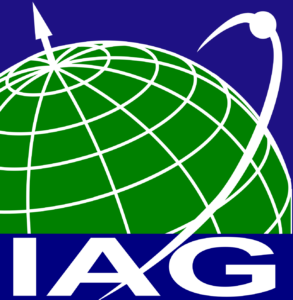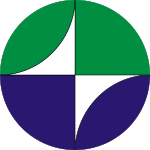JSG T.47 Height datum: Definition, New Concepts, and Standardization
Chair: Xiaopeng Li (USA)
Vice-Chair: Marcelo Santos (Canada)
Affiliations: Commission 2, IGFS
Terms of Reference
Since geometric heights above the reference ellipsoid (as obtained by transformation of geocentric Cartesian coordinates estimated routinely by GNSS) have no physical meaning, the concept of various physical heights, such as orthometric and normal, has been developed in geodesy. All physical heights use a height reference surface (height datum) the geoid defined as a reference equipotential surface of the Earth’s gravity field.
To transform geometric heights into orthometric heights, the geoid height defined as ellipsoidal normal separation of the geoid and the reference ellipsoid, must be precisely known. However, given the definition of normal heights using an analytic model of the Earth’s gravity field (known as the normal field in geodesy), the so-called height anomaly must alternatively be estimated. Thus, local or global models of the geoid height/height anomaly must be estimated with high precision (1 cm or better).
Through the past decades, various definitions of the height datums for physical heights have been used, both officially and unofficially. For example, a classical textbook definition of the geoid reads as ”equipotential surface of the Earth’s gravity field 21 approximated by the temporal mean sea level over the oceans”. This definition is easy to understand; however, the estimation of such a surface over the continents leaves some theoretical issues to be resolved. Moreover, the concept of the normal heights based on the quasi-geoid has even some serious theoretical issues as some recent studies reported.
The main goal of this joint study group is to establish new or to extend existing international cooperation of researchers within the physical geodesy community in order to review and specify the definition of the height reference surfaces used in connection with physical heights in geodesy. The ultimate goal of the group is to provide a clear, rigorous, and manageable guideline for their precise (1 cm or better) realization.
The updated or new concepts for the height datum realization will consider data from various observation systems, including modern ones such as those based on precise clocks (chrono-geodesy using relativistic effects). Additionally, it will be investigated how to link seamlessly and errorlessly the geoid height/height anomaly models with local high-resolution and accurate spirit levelling observations as the concept and realization of height datums must serve real world applications of physical heights.
Objectives
The scope of this JSG will cover theoretical aspects of the geoid height or height anomaly modelling. In particular, the group will focus on:
• physical parameters such as GM and W0
• geo-center conventions with respect to the International Terrestrial Reference Frame (ITRF)
• tide system conventions
• combination of various gravity field data
• new geodetic boundary-value problems
• consolidate the theory of physical heights
Program of Activities
The JSG will achieve its objectives through:
• Specifying height datum definitions and providing official documentation to the IAG.
• Suggesting recommendations regarding the practical use of normal heights related to the geoid.
• Updating and unifying required systems and parameters (which sea surface and which epoch).
• New convention of atmospheric correction
• Seamless connection of local, regional, marine datums, and global datum
• Circulating and sharing information, ideas, progress reports, papers and presentations.
• Organizing a session at the Hotine-Marussi Symposium 2026.
• Supporting and cooperating with the IAG Commission 2, ISG, and IGFS, namely their working groups and other entities related to the gravity field and height systems.
Members
Xiaopeng Li (USA), chair
Marcelo Santos (Canada); Vice-chair
Ana Cristina Matos (Brazil)
David Avalos (Mexico)
Elena Osorio-Tai (Mexico)
Fabio Albarici (Brazil)
Gabriel Guimar.es (Brazil)
Georgios Vergos (Greece)
Hussein Abd-Elmotaal (Egypt)
Ismael Foroughi (Canada)
Jianliang Huang (Canada)
Jurai Jan.k (Slovakia)
Laura Sanchez (Germany)
Miao Lin (China)
Nicolaas Sneeuw (Germany)
Pavel Nov.k (Czech Republic)
Riccardo Barzaghi (Italy)
Robert Kingdon (Canada)
Yanming Wang (USA)
Associate members
Fernando Sans. (Italy)
Rachelle Winefield (New Zealand)



